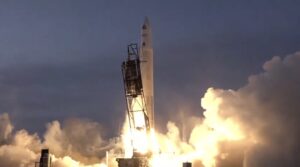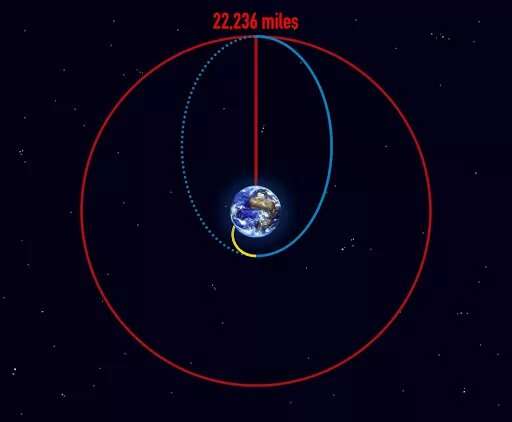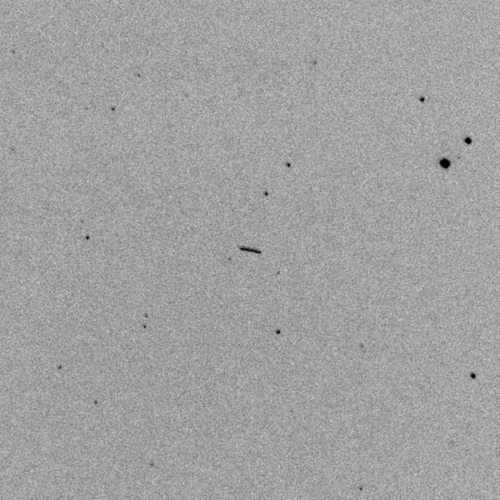Astra’s Rocket 3.3 returns to flight with successful launch
Tuesday, 15 March 2022 17:15
Astra successfully returned its Rocket 3.3 vehicle to flight March 15, placing several payloads into low Earth orbit.
The post Astra’s Rocket 3.3 returns to flight with successful launch appeared first on SpaceNews.
Kymeta secures $84 million to scale up antenna production
Tuesday, 15 March 2022 15:02
Antenna maker Kymeta said March 15 it has raised $84 million to expand manufacturing facilities ahead of deploying its first flat panel, electronically steered user terminals for low Earth orbit (LEO) satellites this year.
Launching robots into lunar caves
Tuesday, 15 March 2022 13:46
A hundred meters below the surface of the moon lie caves untouched by humans. They were discovered about ten years ago, but space agencies want to send robots to investigate these mysterious cavities before astronauts venture in. "On the moon's surface, the temperature is 150 degrees above zero during the day and 150 degrees below zero at night," says Lucas Froissart, who recently completed a Master's degree in mechanical engineering at EPFL. "In these subterranean caves, which can be reached through natural, vertical pits, the temperature is -30 degrees and there's no radiation. Since the climate is constant and tolerable for human beings, these tunnels could conceivably serve as base camps."
Round robots
During his Master's program, Froissart landed an internship at the Japan Aerospace Exploration Agency (JAXA). Because of the pandemic, however, he couldn't go to Tokyo. He ended up doing his internship work in Professor Auke Ijspeert's lab, collaborating with his Japanese colleagues by video conference.
Ukrainian space industry players continue work, eye European projects amid war
Tuesday, 15 March 2022 11:52
While Russia’s invasion of Ukraine continues to impact the Ukrainian space sector, senior industry representatives say that local companies have so far managed to adapt their activities to the realities of war, and they are determined to advance joint projects with their European partners.
NASA ready to roll out SLS
Tuesday, 15 March 2022 10:38
NASA is ready to roll out the first Space Launch System rocket this week for a countdown rehearsal ahead of a launch later this year.
The post NASA ready to roll out SLS appeared first on SpaceNews.
Space station operations remain normal despite geopolitical tensions
Tuesday, 15 March 2022 10:07
Russia’s invasion of Ukraine has not affected operations of the International Space Station or plans for a NASA astronaut to return home on a Soyuz spacecraft late this month, according to agency officials.
GMV guarantees PAZ satellite services
Tuesday, 15 March 2022 09:19 GMV , the world's number-one independent supplier of telecommunication satellite control centers and responsible for designing, developing, validating, and implementing the control center and user services included in the ground segment of the PAZ satellite, has signed a new contract with INTA (Instituto Nacional de Tecnica Aeroespacial) for the corrective maintenance of the main elements of its
GMV , the world's number-one independent supplier of telecommunication satellite control centers and responsible for designing, developing, validating, and implementing the control center and user services included in the ground segment of the PAZ satellite, has signed a new contract with INTA (Instituto Nacional de Tecnica Aeroespacial) for the corrective maintenance of the main elements of its Millennium Space Systems shipped GEO Wide Field of View for launch
Tuesday, 15 March 2022 09:19 The U.S. Space Force's Wide Field of View spacecraft arrived safely on February 2 to the launch processing facility in Florida, having shipped from Millennium Space Systems, a Boeing (NYSE: BA) company's headquarters in El Segundo, California.
This satellite was procured by the Space Systems Command to serve as testbed for Wide Field of View technologies in geosynchronous, or GEO, orbit fo
The U.S. Space Force's Wide Field of View spacecraft arrived safely on February 2 to the launch processing facility in Florida, having shipped from Millennium Space Systems, a Boeing (NYSE: BA) company's headquarters in El Segundo, California.
This satellite was procured by the Space Systems Command to serve as testbed for Wide Field of View technologies in geosynchronous, or GEO, orbit fo MDA retires space tracking and surveillance system after 12 years, thousands of missions
Tuesday, 15 March 2022 09:19NOAA's GOES-T reaches geostationary orbit, now designated GOES-18
Tuesday, 15 March 2022 08:52
NASA says Mark Vande Hei will return from ISS on Russian spacecraft
Tuesday, 15 March 2022 06:55 NASA on Monday said astronaut Mark Vande Hei would return from the International Space Station aboard a Russian Soyuz spacecraft as planned, amid Russia's invasion of Ukraine.
The space agency said Vande Hei, who was sent to the ISS in April of last year, is scheduled to land aboard the Soyuz spacecraft in Kazakhstan and return to the United States on a Gulfstream jet - as is customary
NASA on Monday said astronaut Mark Vande Hei would return from the International Space Station aboard a Russian Soyuz spacecraft as planned, amid Russia's invasion of Ukraine.
The space agency said Vande Hei, who was sent to the ISS in April of last year, is scheduled to land aboard the Soyuz spacecraft in Kazakhstan and return to the United States on a Gulfstream jet - as is customary NASA insists space station unaffected by Russian war
Tuesday, 15 March 2022 05:01 NASA on Monday insisted tensions linked to the war in Ukraine had no impact on International Space Station operations or the planned return of an American astronaut aboard a Russian capsule later this month.
Mark Vande Hei is due to fly to the Baikonur Cosmodrome in Kazakhstan aboard a Russian Soyuz capsule with cosmonauts Pyotr Dubrov and Anton Shkaplerov on March 30 after 355 days in space
NASA on Monday insisted tensions linked to the war in Ukraine had no impact on International Space Station operations or the planned return of an American astronaut aboard a Russian capsule later this month.
Mark Vande Hei is due to fly to the Baikonur Cosmodrome in Kazakhstan aboard a Russian Soyuz capsule with cosmonauts Pyotr Dubrov and Anton Shkaplerov on March 30 after 355 days in space Astra Space scrubs first launch since rocket failure because of lightning
Tuesday, 15 March 2022 05:01 California-based Astra Space scrubbed the launch of a rocket from Alaska on Monday due to a potential for lightning in the area, company officials said.
The attempt was its first return to a launchpad since the company's stock plunged after it suffered a rocket failure during launch of a NASA mission from Florida on Feb. 10.
"Astra scrubbing for the day, due to triggered lightnin
California-based Astra Space scrubbed the launch of a rocket from Alaska on Monday due to a potential for lightning in the area, company officials said.
The attempt was its first return to a launchpad since the company's stock plunged after it suffered a rocket failure during launch of a NASA mission from Florida on Feb. 10.
"Astra scrubbing for the day, due to triggered lightnin NASA prepares to roll out giant Artemis moon rocket
Tuesday, 15 March 2022 05:01 After years of delay, NASA plans to roll its massive new SLS moon rocket out of the historic Vehicle Assembly Building and onto it's launch pad for the first time Thursday.
The rollout will be the first time a NASA rocket so large - 322 feet tall - has moved to a launch pad since Apollo 17's Saturn V rocket did so before launching astronauts to the moon in 1972.
Space shuttles
After years of delay, NASA plans to roll its massive new SLS moon rocket out of the historic Vehicle Assembly Building and onto it's launch pad for the first time Thursday.
The rollout will be the first time a NASA rocket so large - 322 feet tall - has moved to a launch pad since Apollo 17's Saturn V rocket did so before launching astronauts to the moon in 1972.
Space shuttles 

